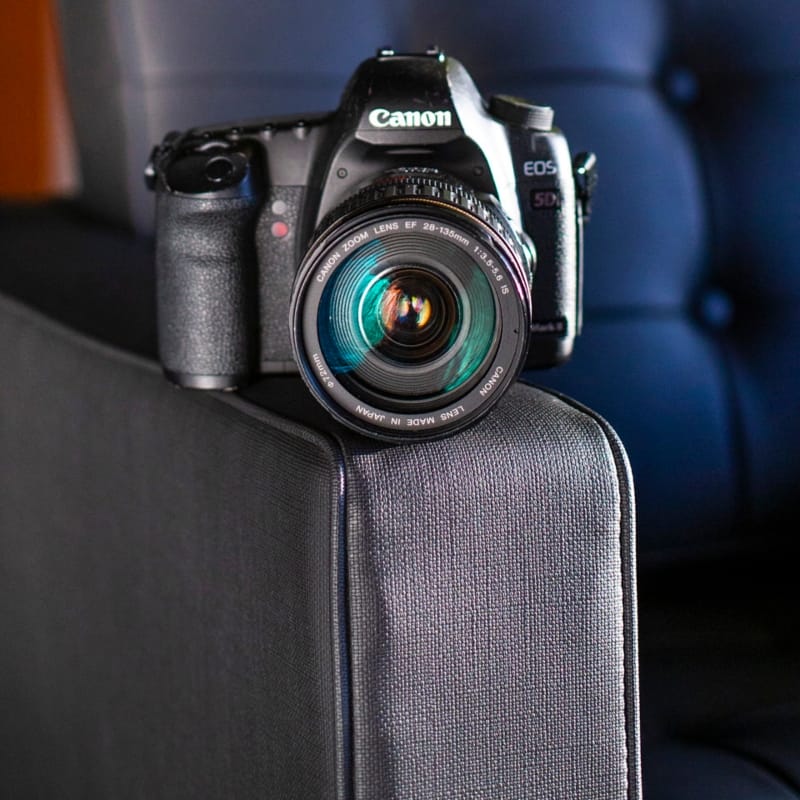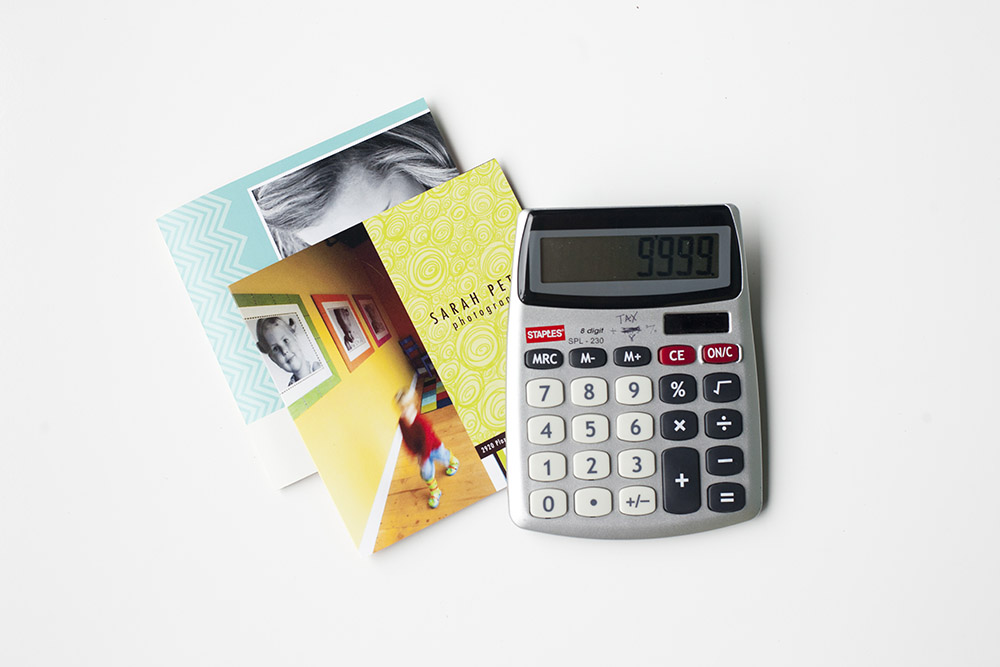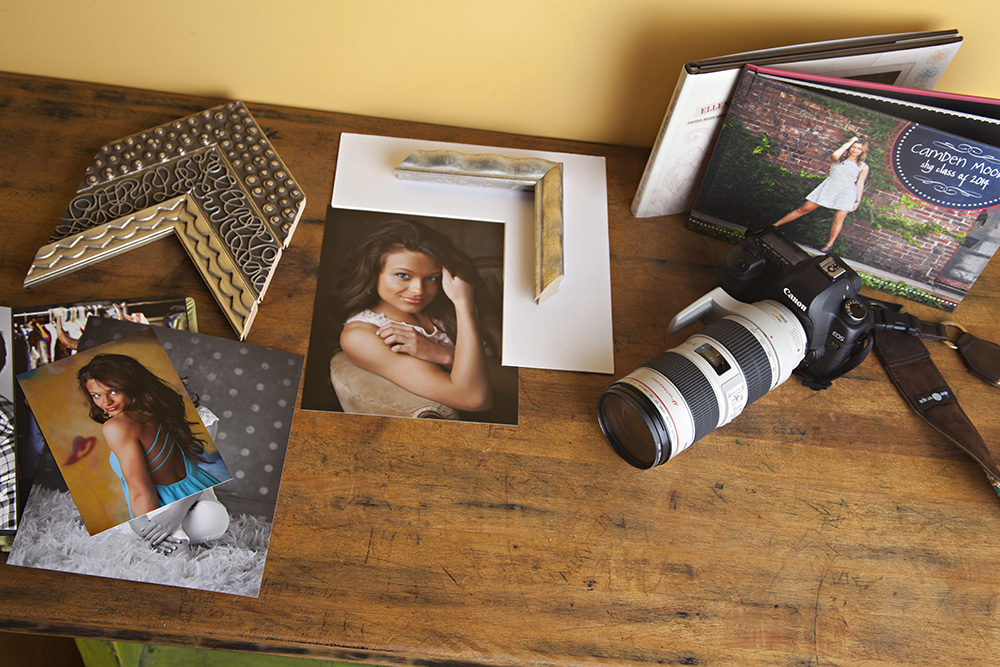Photography Pricing Pop Quiz: Are you losing money on your 8x10s?
How do you know?
What if I told you that your photography pricing plays a huge factor in how much money you’ll make in your photography business?
That little 8×10 is not just a product you sell, it’s the canary in the coal mine. It’s the #1 number your clients use to compare you with every other photographer, and it’s how you are measured against them!
Q: Are you priced so cheap that you attract the Groupon Moms and Goodwill bargain hunters?
Q: Is your photography pricing based on a guess and a whim?
I’m going to show you 4 steps to making a solid profit on your 8×10 prints.
By the end of this post, you’ll have the tools you need to know if you are pricing your 8×10 to earn a profit. If you’re not you’ll know what you need to change.
Making the necessary changes to attract the right clients and clear a real profit on more than just your 8x10s!
There’s going to be some math in this post. Understanding the money side of your business is what makes you a professional. And I’m here to help you build a business that you love. Are you in?
Step #1: Know Your Business Model, Know Your Client
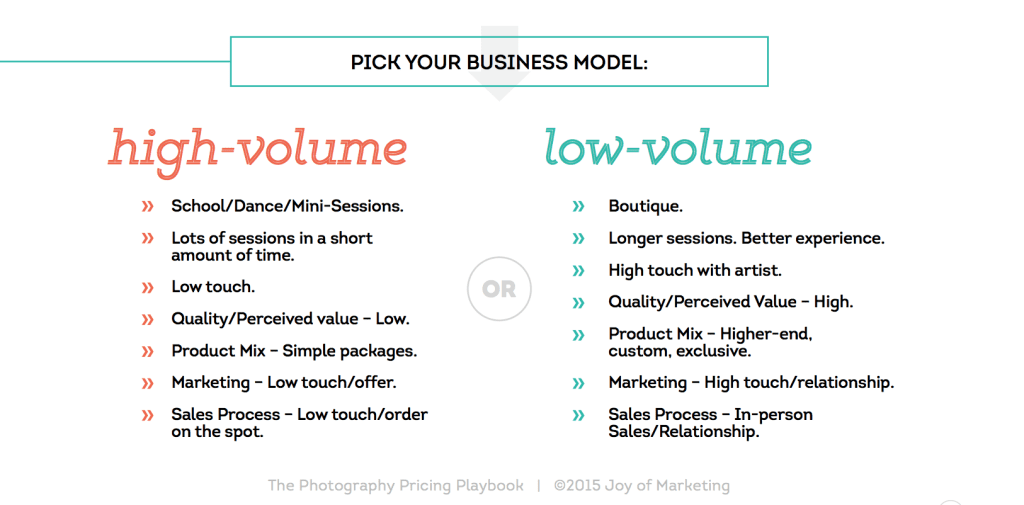
By now, you’ve probably spent some time thinking through and defining your business model.
Your business model helps determine your pricing structure.
Are you Boutique? Think high-end products your clients can’t get elsewhere, customized experiences with each client, lots of time spent with every client to get it just right and high-expectations to deliver something gush-worthy.
Are you a volume shooter? Even as a high-volume photography business, you still need to make a profit! You can price a bit lower and make your client feel like they got a great deal. You’ll make your profit on volume.
When a potential client asks the price of an 8×10, without even knowing it, they judge your overall value, your skill, your customer service and your ability to make them look and feel amazing.
Related Post: How Does Your Photography Pricing Compare?

Price your 8×10 too low, and you risk being associated with the CVS “portrait” guy who shot your Passport photo. Or the neighbor who has a good eye, but is still just a hobby photographer.
They haven’t made the leap of turning their hobby into a business. You have.
Price your 8×10 without doing the math, and you risk having a price that you can’t back-up. If you can’t back it up, you’ll back down from it.
Price it just right, based on your business model, your operating costs and your ideal client. This will set you up for success. It’s that easy!
Step #2: Know Your Cost – What does an 8×10 Cost You?
When I say Costs, I don’t mean the price you pay to your lab for an 8×10. That’s a small part of the whole.
Cost Of Good Sold (COGS) is the hard cost associated with creating and delivering a product.
These are the direct business expenses that go into getting an item into the client’s hand.
Your COGS is going to account for much more than just the paper you’re selling. Your COGS includes anything that goes into the finished product your client takes home.
Here’s a quick list to get you thinking of a more inclusive, realistic COGS:
* Lab Fees (this is the obvious one)
* Labor – Download, Retouch, Edit, Order placing, it’s all time and it all costs money.
(If you’re a boutique, it may be 30 minutes per image, if high-volume, maybe 5.)
* Framing, Matting, Frame Shipping
* Credit Card Processing Fees – typically 2-3%
* Shipping – if you’re mailing it to the client, that’s postage, packaging and labor – COGS!
* Packaging – do you use cute vellum bags like I do? Those aren’t free…
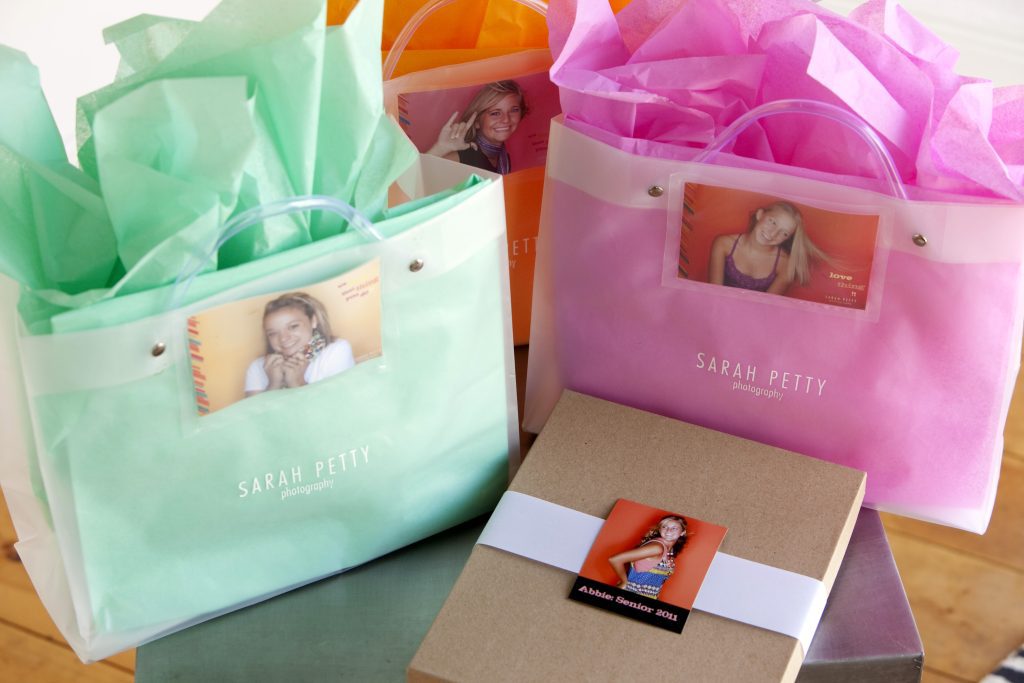
Professional Photographers of America (PPA) created a Benchmark Study where they survey thousands of photographers to establish certain benchmarks. Their results show that your COGS should be no more than 25% of your total revenue if you want to run a profitable photography business.
Related Post: Photography Pricing List Critique: 5 Ways to Improve Your Photography Prices
If you earn $100,000, your total COGS for ALL sales should be under $25,000.
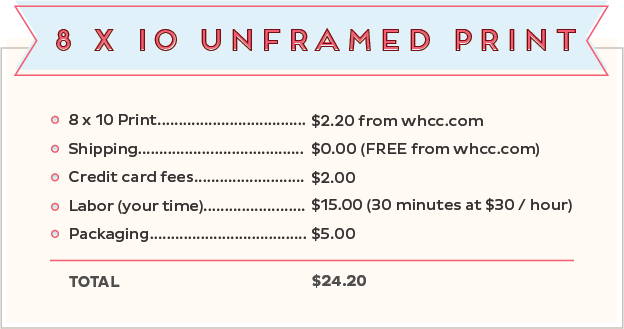

Obviously, the COGS for an 8×10 will be different for every photographer.
And the COGS for your 8×10 will be different from your other products. But what’s important to know is this formula works great for prints, but albums and books look a little different.
This is where many of us go wrong. If your prices just cover your COGS, you’ll never be profitable. You’re a professional there are other expenses your photography business incurs whether you have a client or not.
Are you ready for step 3?
(Want to know how Debra quit selling digital files and sold $10,000 worth of portraits in 45 DAYS… during the PANDEMIC? You can do the same, check out this course here.)
Step #3: Don’t Overlook your OTHER Expenses
Every penny your business spends should factor in to your 8×10 pricing. Be thorough. Be honest. Here are a few categories to help you think of everything.
|
|
Many are fixed expenses, meaning they are expenses that get paid if you have a client or not.
If you’re going to stay in business–and make a profit–you must pay for these fixed expenses from your sales. Just charging the COGS means you’re losing money!
Step #4: Decide Your Profit!
This is the BEST part, and the one step to rule them all!
You determine your success, and your pricing determines your profit.
If you only charge enough to cover your actual 8×10 costs (COGS), you will be losing money on your fixed costs: overhead, equipment, insurance, supplies, staff, taxes, marketing, etc. And you definitely won’t be paying yourself out of the business profit.
If you want to make a real living from your photography, you have to charge enough to cover your COGS, your Fixed Costs and profit to pay yourself.
Typically, that is 4-5 times your hard costs!
This method allows me to pay my fixed costs, variable costs and a salary.

8×10 Pricing Pop Quiz!
Here’s a quick quiz to help you quickly assess your pricing.
1) How much do you charge for an 8×10?
2) What does it cost you to get an 8×10 into your client’s hand? (COGS)
3) Now, divide the first number by the second number, and tell us your number in the comments!
Example: $100/$25 = 4, you’re ok! $49.95/$25 = 2, yikes! No profit!
|
Some Helpful Math In my boutique business, I use demand-based pricing so my prices are even higher. But for starting out on the path to profitability, at minimum your prices need to be 4x your COGS. 4-5 times the cost is a baseline price and it’s where I started when I decided if I was going to be away from my newborn twins, I needed to make Sarah Petty Photography a profitable business. PPA’s Benchmark says hard costs (COGS) should make up less than 25% of your overall income! So, you need to multiply the COGS by at least 4 to arrive at your profitable 8×10 price! In the framed 8×10 example above, multiply the cost of goods for your framed 8×10 by 4 ($76.60 x 4) to get your framed 8×10 price: $306.40. This covers your costs and expenses and leaves you with a bit of profit. The unframed 8×10 COGS was $24.20, so $24.20 x 4 = $96.80. Be sure you have some profit baked in for you to take home from every sale! |

